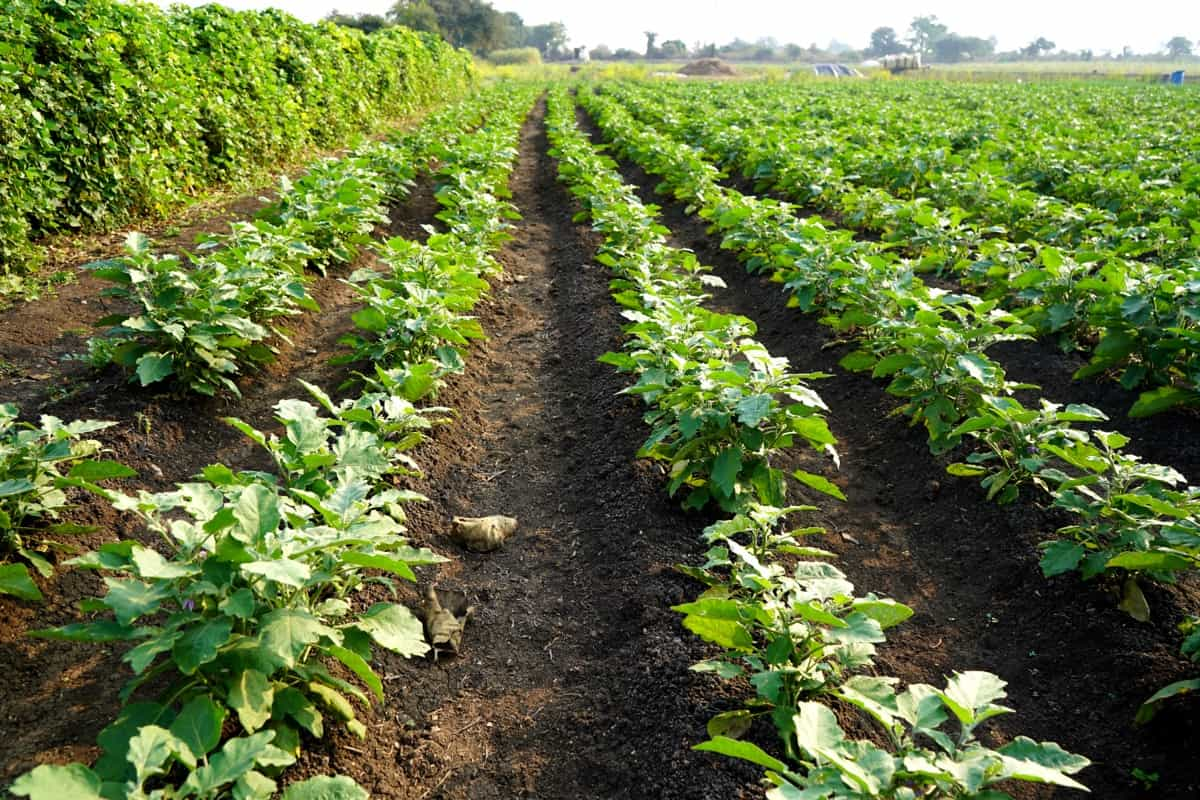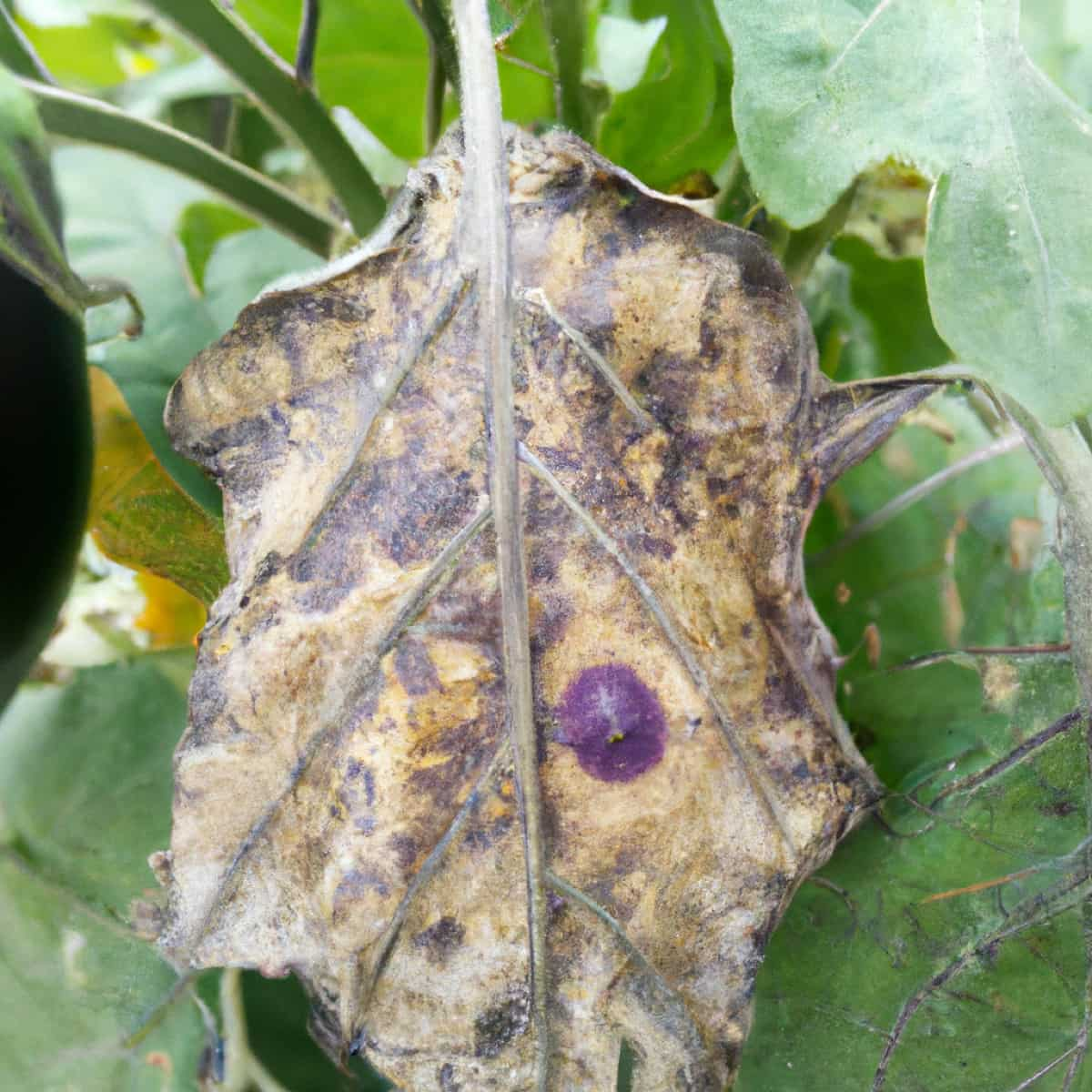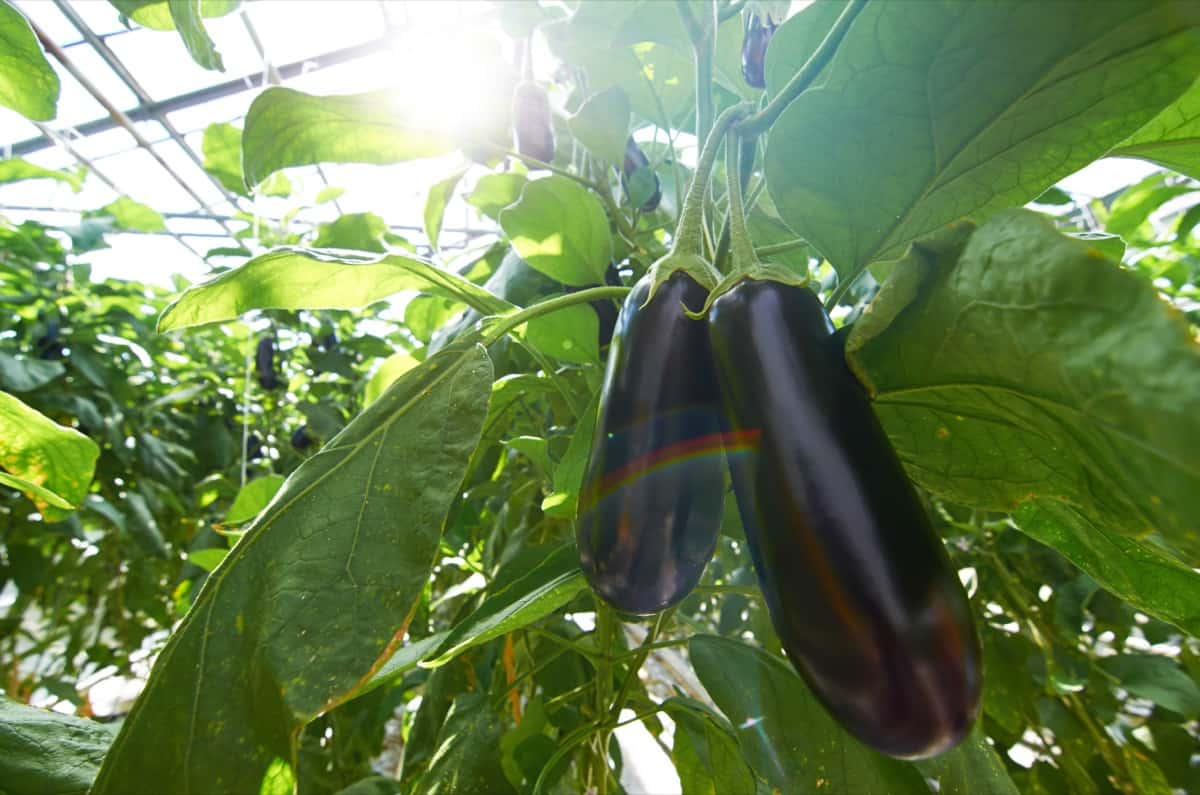Verticillium wilt is a serious plant disease caused by soilborne fungi that can infect many plants, including crops, trees, and ornamentals. This disease can cause significant damage to affected plants, reducing crop yields and damaging landscapes. The fungus invades plant roots and then spreads throughout the plant, clogging its water, nutrient, and sap pathways, leading to wilting and premature death.

Verticillium Wilt Management in Eggplant (Brinjal)
The causal organism of Verticillium Wilt Disease
- The causal organism of Verticillium wilt disease is a soilborne fungus called Verticillium dahliae.
- This fungus belongs to the genus Verticillium, which contains several species that can cause similar plant symptoms.
- Verticillium dahliae is a filamentous fungus that typically enters plants through the roots and colonizes the xylem, the tissue responsible for transporting water and nutrients throughout the plant.
- Once inside the plant, the fungus produces toxins that interfere with the normal functioning of the xylem, leading to wilting, yellowing, and stunted growth.
- The fungus can persist in the soil for many years as resistant structures called microsclerotia, making it difficult to control and manage once established in a field.
The Disease cycle of Verticillium Wilt Disease
- Infection: When a susceptible host plant grows in microsclerotia soil, the fungus invades the roots directly or through natural wounds. Once inside the plant, the fungus produces a toxin that spreads through the xylem, blocking the movement of water and nutrients.
- Spread: As the fungus colonizes the vascular tissue, it produces spores that can be transported throughout the plant. The spores can also spread to other plants through root grafts or irrigation water.
Causes/Conditions favorable for Verticillium Wilt Disease spread in the field.
- Moist soil: The fungus that causes Verticillium wilt thrives in moist soil. Soil that is over-irrigated or has poor drainage can create favorable conditions for spreading the disease.
- Warm temperatures: The optimal temperature range for Verticillium wilt is 21-27° C (70-81° F). Temperatures that fall outside this range can slow the growth and spread of the fungus.
Symptoms of Verticillium Wilt Disease in Eggplant
- Yellowing of the leaves
- Wilting of the plant
- Stunted growth with small, yellowish-green leaves
- Fading of the edges of the leaves
- Rolling inward of the leaves
- Browning and drying of the leaves
- Vascular streaking in the leaves and stems
- Disrupted movement of nutrients and water
- Failure to produce usable fruit
In case you missed it: Bacterial Wilt Management in Eggplant (Brinjal): Symptoms, Treatment, Chemical, Biological, Natural, and Organic Control

Bacterial Wilt Management in Eggplant by Cultural Method
- Crop rotation: Crop rotation with non-host crops such as broccoli, corn, wheat, barley, sorghum, or safflower can help reduce inoculum levels in the soil. The longer the rotation, the better.
- Avoid replanting eggplants: Do not replant eggplants in the same field for at least three years.
- Use disease-free planting material: Use disease-free planting material to reduce the risk of introducing the pathogen into the field.
- Manage irrigation: Avoid overwatering and minimize soil moisture to reduce favorable conditions for the pathogen.
- Practice good sanitation: Remove and destroy infected plant material, and avoid spreading soil from infested fields to uninfected areas.
Bacterial Wilt Management in Eggplant by Biological Method
- Trichoderma spp.: These are fungi that are commonly found in soil and are known to have antagonistic effects against V. dahliae. The use of Trichoderma spp. can help reduce disease incidence and severity. Trichoderma spp. can be applied as soil amendments or in combination with seed treatments.
- Bacillus spp.: Certain strains of Bacillus spp. are effective against V. dahliae. These bacteria produce compounds that have antifungal properties and can inhibit the growth of the pathogen. Bacillus spp. can be applied as soil amendments or in combination with seed treatments.
- Mycorrhizal fungi: Certain species of mycorrhizal fungi can colonize the roots of plants and help protect them against soilborne pathogens such as V. dahliae. These fungi can also enhance plant growth and nutrient uptake.
Bacterial Wilt Management in Eggplant by Chemical Method
Double Nickel LC and Stargus are chemical control measures to manage Verticillium Wilt Disease in eggplants. Double Nickel LC is a fungicide with the ingredient Bacillus amyloliquefaciens strain D747. It is applied as a soil application at a rate of 0.5 to 4.5 pints per acre at 14- to 28-day intervals. It can also be applied on the day of harvest. Double Nickel LC has a reentry interval of 4 hours. This product works by colonizing the rhizosphere of the plants and producing antifungal metabolites that can suppress the growth of Verticillium dahliae.
Stargus is another fungicide that contains the active ingredient Bacillus amyloliquefaciens strain F727. It can be applied as an in-furrow treatment at 6 to 8 fl oz per 1,000 ft row or as a soil drench (drip or chemigation) at 3 to 4 quarts per acre on 10- to 21-day intervals. Stargus has a preharvest interval of 0 days and a reentry interval of 4 hours. This product works by colonizing the root zone of the plants and producing enzymes and metabolites that can suppress the growth of Verticillium dahliae.
In case you missed it: How to Manage Bacterial Leaf Spot in Home Garden: Symptoms, Cultural, Biological, Chemical, Organic Methods of Management

Preventive Measures for Control of Verticillium Wilt Disease in Eggplant
- Remove and destroy infected plants, do not compost.
- Do not plant susceptible species in the same area where verticillium wilt has been detected.
- Choose resistant or immune plant varieties whenever possible.
- Give infected trees and shrubs the best possible care, including regular watering, afternoon shade, and fertilization with a low-nitrogen, high-phosphorus fertilizer.
- Prune off dead and dying branches.
- Consider soil solarization to kill the verticillium wilt fungus in the
Conclusion
Verticillium wilt is a devastating disease affecting many plants, from vegetables to trees and shrubs. It’s caused by soilborne fungi that invade plants through the roots and plug their water, nutrient, and sap pathways. Unfortunately, the disease has no cure, but various preventive measures can help control its spread.
These measures include planting resistant varieties, practicing good cultural practices, removing and destroying infected plants, and solarizing the soil. By taking these steps, gardeners and farmers can help protect their crops and landscapes from the devastating effects of Verticillium wilt.
- Beneficial Insects in Pest Management
- Natural Solutions for Pest Control in Flower Gardens
- Types of Fungicides Used in Agriculture
- Common Issues in the Fruit Development Stage of Pomegranate Farming
- Fruit Development Issues in Papaya: Easy Solutions and Treatment
- Soil-Borne Diseases and How to Protect Your Plants
- Practices to Prevent Disease Spread in the Garden
- From Wilted to Thriving: How to Treat Root Rot Naturally in Houseplants
- Natural Remedies to Cure Brown Spots on Fig Tree Leaves